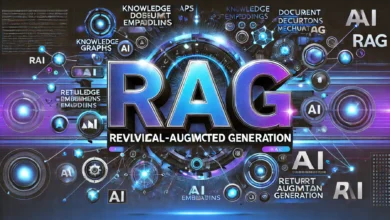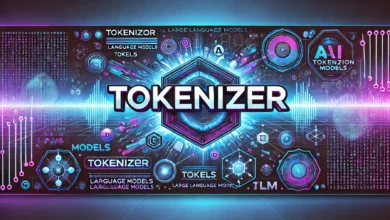How to Evaluate Large Language Models (LLMs)
Introduction
Evaluating Large Language Models (LLMs) is crucial to ensure they perform effectively, ethically, and reliably across diverse tasks. As LLMs like GPT-4, Gemini, and LLaMA become integral to industries from healthcare to entertainment, understanding how to assess their capabilities and limitations is essential. This guide outlines a structured approach to evaluating LLMs, covering metrics, methodologies, and best practices.
1. Why Evaluate LLMs?
- Performance Validation: Ensure the model meets task requirements (e.g., accuracy in translation).
- Ethical Assurance: Detect biases, toxicity, or harmful outputs.
- Resource Optimization: Assess computational efficiency for deployment.
- Benchmarking: Compare models to drive innovation and track progress.
2. Automated Metrics
Automated metrics provide scalable, quantitative assessments:
- Perplexity: Measures how well the model predicts a test dataset (lower values indicate better performance).
- BLEU (Bilingual Evaluation Understudy): Evaluates machine translation quality by comparing outputs to human references.
- ROUGE (Recall-Oriented Understudy for Gisting Evaluation): Assesses summarization by measuring overlap with reference texts.
- METEOR: Improves BLEU by considering synonyms and sentence structure.
- Task-Specific Metrics:
- Accuracy for classification tasks.
- F1 Score for balancing precision and recall.
Example:
from datasets import load_metric
bleu = load_metric("bleu")
predictions = ["the cat sat on the mat"]
references = [["the cat is on the mat"]]
print(bleu.compute(predictions=predictions, references=references)) 3. Human Evaluation
Automated metrics often miss nuances like creativity or coherence. Human evaluation complements them by assessing:
- Fluency: Grammatical correctness and readability.
- Relevance: Alignment with user intent.
- Coherence: Logical flow of ideas.
- Creativity: Originality in tasks like storytelling.
Best Practices:
- Use blinded evaluations to avoid bias.
- Aggregate scores from multiple annotators.
- Leverage platforms like Amazon Mechanical Turk or Prolific for scalability.
4. Task-Specific Evaluations
Tailor evaluations to the model’s application:
- Zero/Few-Shot Learning: Test generalization without task-specific training (e.g., GPT-3 solving math problems).
- Domain-Specific Tasks:
- Medical QA: Evaluate diagnostic accuracy using benchmarks like MedQA.
- Code Generation: Assess correctness via unit tests (e.g., HumanEval).
- Real-World Deployment: Monitor performance in dynamic environments (e.g., chatbots handling user queries).
5. Ethical and Bias Evaluation
LLMs can perpetuate societal biases or generate harmful content. Key steps include:
- Bias Detection: Use tools like Hugging Face’s Bias Benchmark or ToxiGen to identify racial, gender, or cultural biases.
- Fairness Metrics: Measure disparities in outputs across demographic groups.
- Red Teaming: Simulate adversarial inputs to uncover vulnerabilities.
Example Framework:
from evaluate import toxicity
toxicity_score = toxicity.compute(predictions=["That’s a terrible idea!"])
print(toxicity_score["toxicity"]) 6. Efficiency and Scalability
Evaluate computational demands for practical deployment:
- Latency: Time taken to generate responses.
- Memory Usage: GPU/CPU consumption during inference.
- Throughput: Number of requests handled per second.
- Energy Efficiency: Carbon footprint (e.g., using tools like CodeCarbon).
7. Benchmarking and Reproducibility
Standardized benchmarks enable fair comparisons:
- General Language Understanding: GLUE, SuperGLUE, MMLU.
- Reasoning: BIG-Bench, GSM8K.
- Multilingual: XTREME, Flores-101.
Challenges:
- Overfitting to benchmarks.
- Lack of real-world task representation.
Solutions:
- Use dynamic benchmarks (e.g., HELM).
- Combine multiple benchmarks for holistic assessment.
8. Tools and Frameworks
- Hugging Face Evaluate: Pre-built metrics for diverse tasks.
- Weights & Biases: Track experiments and model performance.
- LM Evaluation Harness: Unified framework for LLM benchmarking.
9. Step-by-Step Evaluation Checklist
- Define Use Case: Clarify the task (e.g., summarization, dialogue).
- Select Metrics: Combine automated and human evaluations.
- Run Benchmarks: Use domain-specific datasets.
- Assess Ethics: Check for bias, toxicity, and fairness.
- Optimize Efficiency: Measure latency, memory, and energy.
- Iterate: Refine the model based on findings.
Conclusion
Evaluating LLMs requires a balanced approach that integrates quantitative metrics, human judgment, and ethical scrutiny. By leveraging tools like automated benchmarks, bias detectors, and efficiency trackers, practitioners can ensure models are both high-performing and responsible. As LLMs evolve, so must evaluation strategies—prioritizing adaptability, transparency, and real-world applicability.
Next Steps:
- Experiment with open-source evaluation tools.
- Participate in shared tasks (e.g., Kaggle competitions).
- Stay updated on emerging frameworks like Holistic Evaluation of Language Models (HELM).
By systematically evaluating LLMs, we unlock their potential while safeguarding against risks, paving the way for trustworthy AI advancements.




